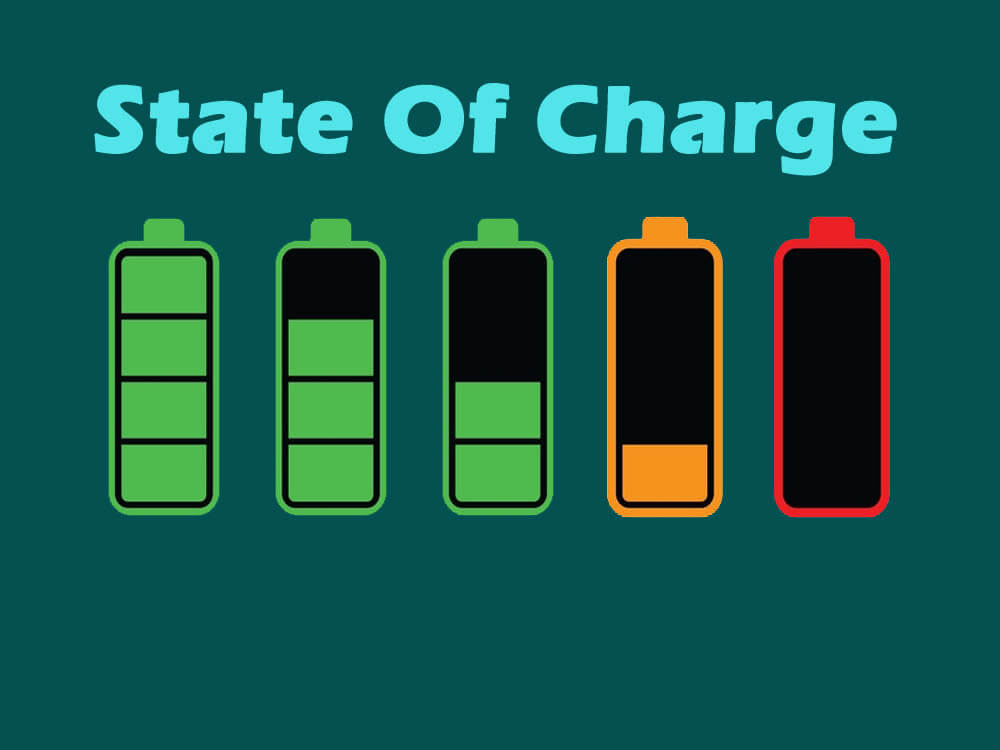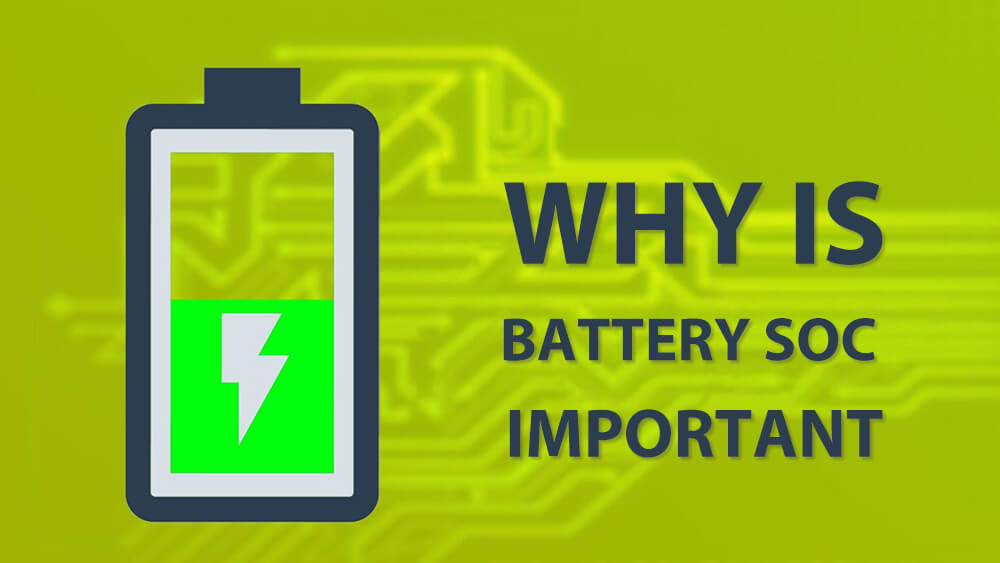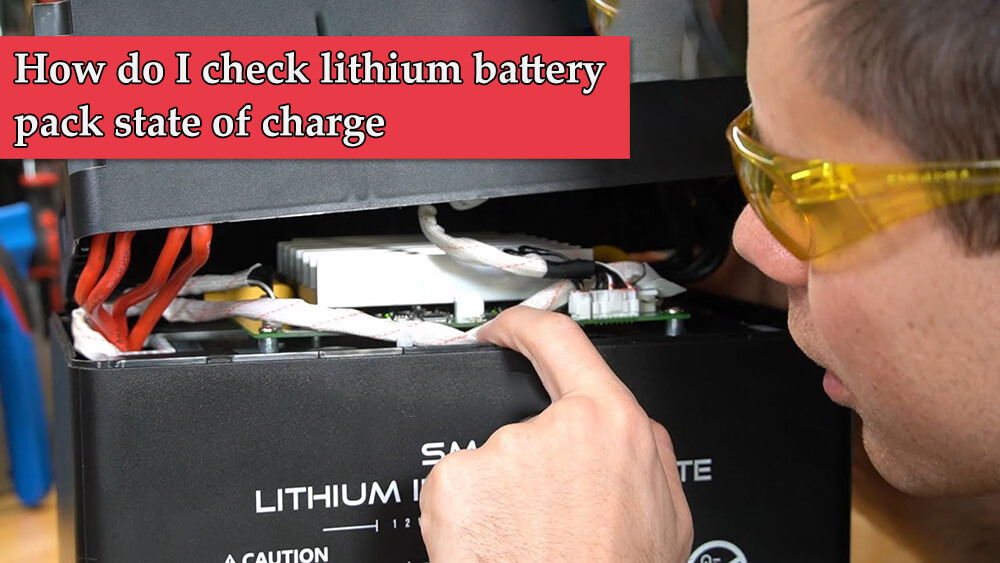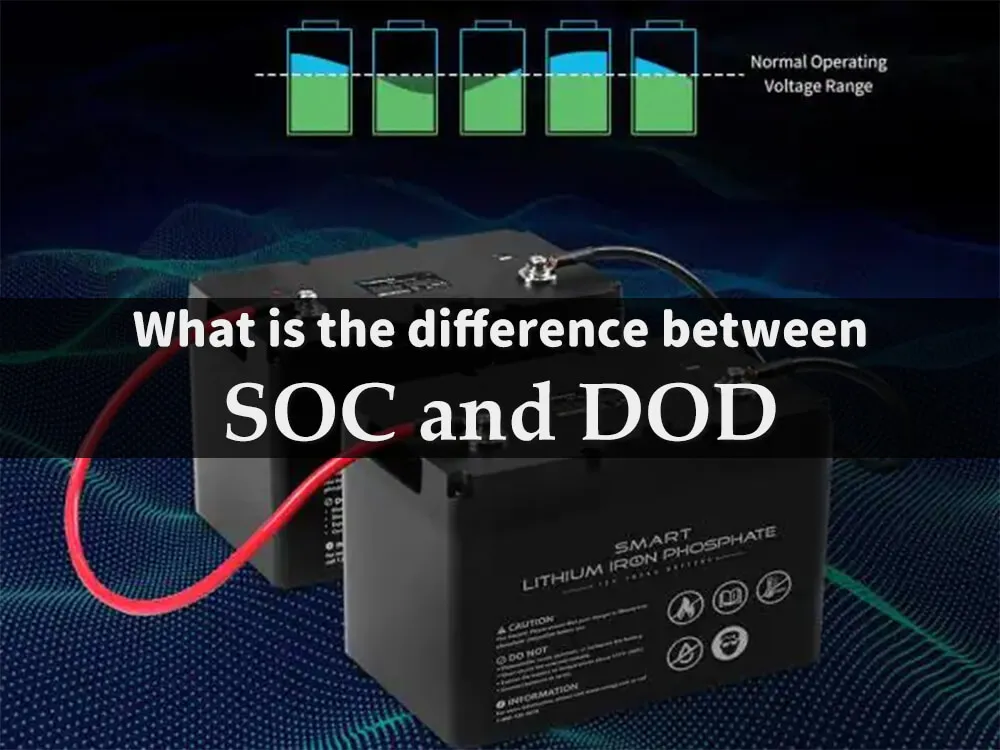How to check state of charge of lithium battery

What is meant by the state of charge
State of charge is a unit of measurement that tells the energy levels of a battery in percentage form. Users check the SOC to help them determine the length of time they can use a device before recharging the battery. E.g., a battery with 95% SOC will last longer than one with 22% SOC.
Why is battery SOC important
The SOC can show whether there is enough electricity to use now, whether it needs to be charged, to prevent users from overcharging and overdischarging, because it is best to stop charging at 96%, and immediately charge when it stops using at 5%.
The state of charge helps you plan on charging times and the length of time you have with a battery before it dies. It also lets you take care of your battery by knowing its performance levels.
How is the state of charge calculated
SOC is the energy level of a battery relative to its capacity at a given time with conditions such as health held constant. The state of charge is given in percentage form. With this in mind, the basic algorithm to calculate SOC is:
The voltage method
This is arguably the simplest method to calculate SOC. For this method, voltage levels indicate energy levels in a battery. As such, the higher a battery’s voltage, the fuller it is, and vice versa. However, this method is subject to errors due to forces such as temperatures and battery composition, which affect voltage levels.
To accurately use this method to calculate SOC, battery manufacturers recommend allowing the battery to rest in an open circuit for about 24 hours. As such, the method is not suitable for measuring active lithium-ion and other batteries.
Coulomb counting method
Coulomb metering can accurately calculate the real-time state of charge during charging or discharging. With charge coulomb counter and discharge coulomb counter, it can calculate remaining capacity (RM) and full charge capacity (FCC). Remaining capacity (RM) and full charge capacity (FCC) can also be used to calculate the state of charge, i.e. (SOC = RM / FCC).
What is cycle life of a battery
This measures the number of charging and discharging cycles a battery has before it dies. Lithium-ion batteries have the best cycle life among all batteries due to their superior depth of discharge. For example, lithium iron phosphate batteries have a cycle life of more than 4000 times, which means that they can be charged and discharged 4000 times from 0-100%.
How do I check a lithium battery pack state of charge
Due to its popularity, lithium-ion batteries are in constant use. Generally, it will be displayed on the device, such as lithium golf cart batteries, the driving system on the golf cart will display SOC.
Consequently, users need to know their battery’s state of charge to plan for their use. Thus, the best method to determine a lithium-ion battery’s SOC is the coulomb counting method, which gives its readings in real-time. Now many battery manufacturers can provide LED screen display power and battery status information, as well as Bluetooth, battery related information can be displayed on the phone. Here are the industry-leading top 10 lithium ion battery manufacturers.
What is the difference between SOC and SOE
For most people, state of charge (SOC) and State of Energy (SOE) are the same. However, upon close inspection, there have minor details that differentiate them. SOC is the amount of energy in a battery at a given time. In contrast, SOE measures a battery’s current condition relative to the optimum expected state of a standard battery. The main parameters used to define SOE are temperature and internal resistance.
What is the difference between SOC and DOD
DOD (Depth of Discharge) just like SOC, DOD is also expressed in a percentage format. Is the fixed capacity of the battery set by the manufacturer, the DOD will decrease as the battery ages, and the SOC is always 0-100%.
A brand new fully charged battery has a DOD of 100%; an aging battery, even if fully charged, cannot reach 100% under different charge and discharge conditions. Generally, when the DOD reaches 80%, the battery needs to be replaced.
What will be the battery voltage when its SOC is 100%
When a battery is at total health and functionality with 100% SOC, its voltage is at maximum; e.g., a 12V battery at 100% SOC will have its voltage constant at 14V.
Why is my battery draining so quickly
There are several reasons why your battery could be draining quickly. These include:
● Different chemical materials of the battery have different self-discharge rates. The self-discharge rate of lithium iron phosphate is as low as 3% per month.
● The battery is old and is nearing the end of its life cycle.
● The battery is being overworked, i.e., it is constantly active with no breaks meaning that it is prone to regular charging and discharging.
● Extreme temperature (Cold) may also cause your battery to drain faster.
How does the state of charge change during charging
As a battery charges, the current and voltage of battery charger adjust to protect the battery. Consequently, this results in slower charging when the battery is almost full. There are three stages of the charging process:
● Trickle charging: during this stage, the battery is charged with a low current as it has extremely low energy and voltage levels.
● Constant current charging: Unlike the previous level, where the device could not be turned on due to low energy, in this level, it can. In this stage, the current used is large and stable, and charging is fast.
● Constant voltage charging: Here, the current reduces as the battery nears maximum capacity for protection. At this time, it is probably charged to 96% SOC, and the charging in the range of 96%-100% will be very slow.
Conclusion
You are better placed to protect and prolong the life of your battery when you know its state of charge (SOC). Thus, regularly check the energy levels of your battery.



























